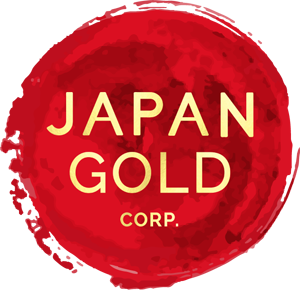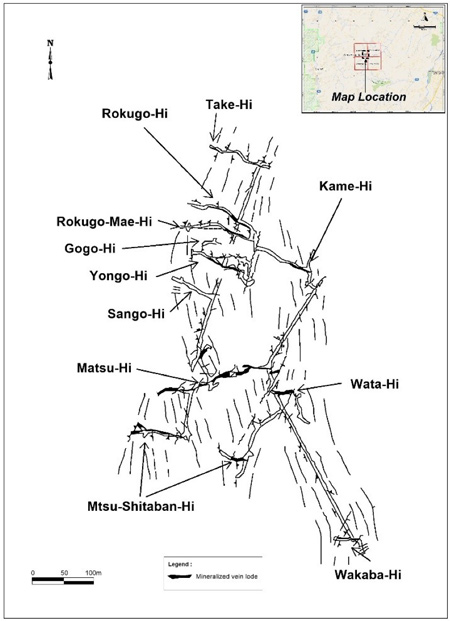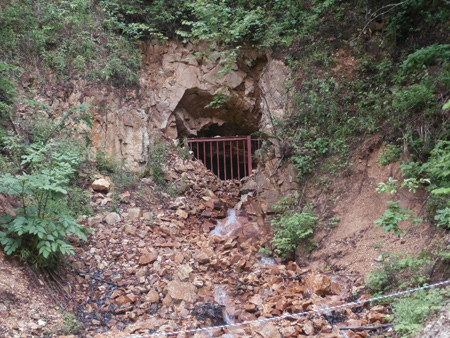Geology and Mineralisation
The gold mineralization in the Numanoue Project is classified as rift-related, low-sulfidation epithermal. Mineralization is typically associated with quartz-adularia-sericite±calcite in silicified and veined- or brecciated-structures, including dark sulfidic material, termed ginguro bands. The Numanoue mine, located near the center of the tenement, is hosted within a 5.0 x 1.0 km, northeasterly-elongate, hypabyssal rhyolite intrusion that cuts felsic tuff and rhyolitic lava sequences of Miocene age.
The Numanoue lode system strikes predominantly west-northwesterly to east-northeasterly and dips sub-vertically. Mineralized structures can be traced up to 400 m (Matsu Hi Vein). Average vein widths range from 0.2-4.5 m and past-production grades range from 2.7-17.0 g/t Au and 15-1,500 g/t Ag (Table 1)2. Veins display crustiform-colloform banding, comb and cockade quartz textures typical of epithermal systems. Milky white quartz occurs in the lode centers and is surrounded by ‘bosa-type’, brittlely-fractured, fine-grained quartz (Photo 1). Bonanza zones are described as localized at the intersection of veins with faults and tend to be more prevalent where the host rhyolite is massive and lacks flow banding2. The presence of contrasting vein styles and textures suggests overprinting and multiple stages of hydrothermal vein fill and mineralization.



